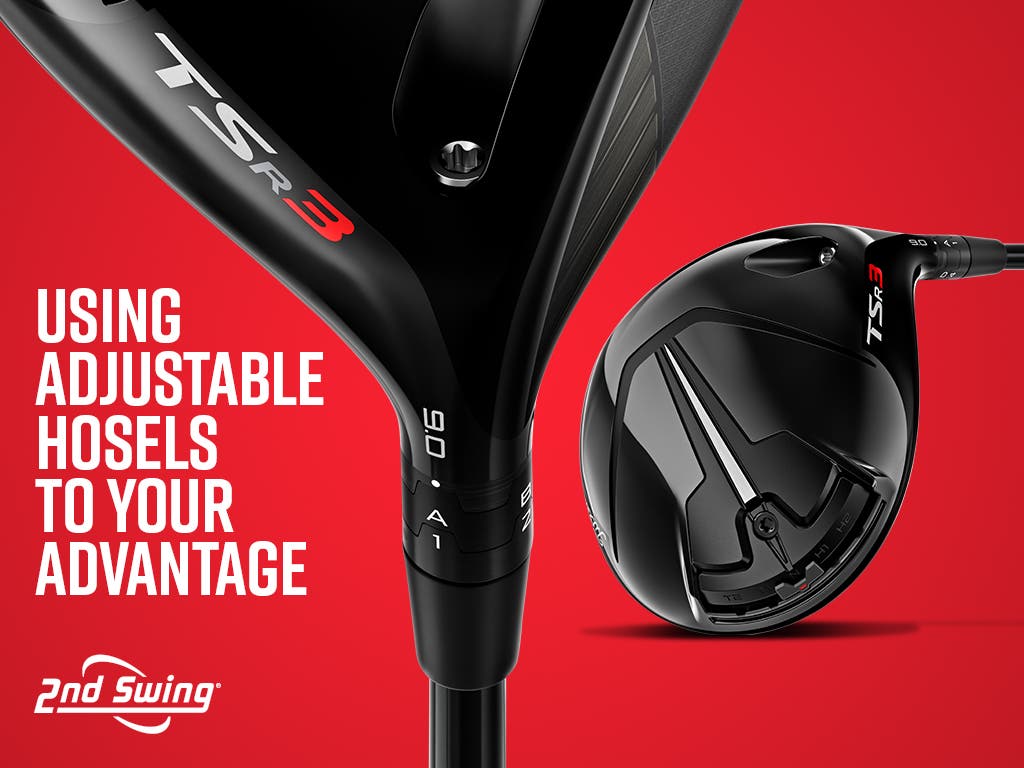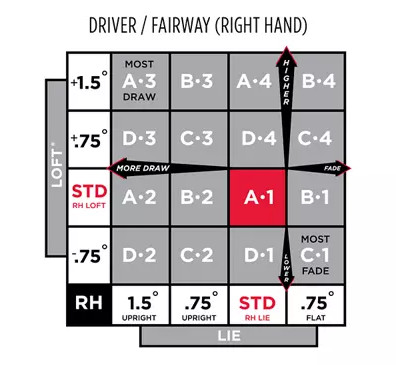Using Adjustable Hosels To Your Advantage

Using Adjustable Hosels To Your Advantage
February 06, 2022
Over the past several years, golf club manufacturers have implemented adjustable hosels into seemingly every new metalwood release.
This innovation has been a revelation for 2nd Swing club fitters, allowing them to dial in clubs for customers even further and, therefore, produce better results.
The most common way manufacturers advertise their adjustable hosels is to make golfers aware that they can change the loft of the club. For example, a 10.5-degree driver might have an adjustable hosel that allows for the loft to be added or subtracted by two degrees. For many golfers, this is the understanding of adjustable hosels.
However, utilizing adjustable hosels impacts much more than just the loft of the club.
“I think there’s a lot of times where golfers think they’re changing one thing and there might be three or four other things that change without them realizing it,” said James Tracy, 2nd Swing master club fitter. “How it affects the setup of the driver, how changing the loft definitely influences the lie angle, and how those things are different from brand to brand.”
Adjusting a metalwood, specifically a driver, is not as easy as just changing the loft to match the higher or lower ball flight you prefer. Those adjustments come with consequences. In most cases, decreasing the loft will flatten the lie angle and open the clubface at address. Meanwhile, increasing the loft will generally move the lie angle more upright and close the clubface.
For instance, a golfer who often plays a high fade may try to lower their ball flight by decreasing the loft. While this adjustment will successfully produce a lower trajectory, the more open clubface will also add to the existing left-to-right spin on the ball and exacerbate the right miss.
It’s important to note that the hosels differ by brand. For instance, the Titleist SureFit Hosel allows for 16 unique loft and lie settings. The chart below explains each of the 16 unique settings that can be selected for a right-handed Titleist driver or fairway wood, which loft changes on the vertical axis and lie angle changes on the horizontal axis.


According to master club fitter Thomas Campbell, the key to optimizing adjustable hosels as an advantage is to first get fit for the correct standard loft. From there, tuning for other settings will work best.
“I think you need to get fit for the right driver head and loft first. Then we can make those adjustments,” Campbell said. “Let’s say you need a 9-degree driver, but your current driver is 10.5 degrees. You don’t want to drop that one down a degree and a half and try to make that work, because you’ll be messing with the lie angle and it will no longer fit you.”
Tracy agreed, adding that today’s various driver models can allow golfers to pick a head that will produce tendencies they’re looking for, such as a draw bias or low launch.
“If I’m fitting someone for a new driver, I’m going to try to go through that fitting in the standard setting. If we find the right head model and shaft combination, many times that standard setting will allow the player to get right into that window where we use the hosel adjustment for the absolute fine tuning.”
Statistically, changing the loft by one degree on a driver or fairway wood will adjust the spin rate anywhere from 100 to 300 RPM, depending on the swing and the club. Decreasing the loft will decrease spin, while increasing the loft will increase spin. This can amount to roughly 5-10 yards of difference, enough distance to affect club selection on the following shot.
The adjustable hosels on golf clubs aren’t just there for show. They are designed to help golfers get as dialed in as possible on the course.
Connect with an award-winning master fitter through the new Live Chat feature on 2ndswing.com, or schedule your award-winning club fitting here.